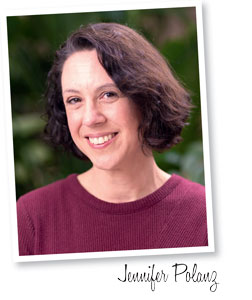12/1/2024
A Space & Place for Everything
Jennifer Polanz

At this point I think everyone agrees (at least, I haven’t seen opposition to this) that native plants are beneficial to local ecosystems and are worth celebrating—and selling.
What becomes the sticking point is the potential disappointment consumers face when their native plants go wild, as nature intended. Whether that disappointment stems from lack of education or regret about intentions versus reality, it’s still an issue.
Katie Tamony, the chief marketing officer at Monrovia, recently spoke at The Garden Center Group Fall Event, and she provided some fascinating insight into what gardeners know about natives. Much of her talk was on who exactly is gardening, but one segment highlighted the company’s consumer study, where Monrovia asked this: “How would you describe native plants to a friend?”
The answers from beginner and intermediate gardeners focused on the features of the plant, many of which can be attributed to both native plants and native cultivars, or nativars:
“Native plants are better for pollinators and they need less care. They grow faster.”
“Native plants are plants that grow naturally in the climate of your locale.”
“Native plants do not require fertilizers and pesticides to grow. They need less water to grow. They prevent erosion.”
More experienced gardeners had a deeper, more nuanced take, still focusing on the features:
“Native plants have originated and evolved naturally in a specific region.”
“Using native plants helps preserve biodiversity and supports local ecosystems.”
“They have co-evolved with other flora and fauna, so they are better suited to support the ecological systems within the region, and are often able to fend off regional pests/diseases that are also native.”
Why highlight this information? Because to me it shows there can be room for both natives and nativars that attract pollinators and local wildlife, depending on the consumer’s understanding. This is a nuanced issue, as many nativars still provide some of the ecological benefits natives do, with the more controlled habits that consumers want. The key here is understanding the plants’ benefits and guiding customers in the right direction. That’s why we asked freelance writer Wendy Komancheck to dive into this story more—and she talked with Katie about how retailers can get to the heart of what their customers really want, as well as retailers who carry both and how they approach it.
As this is the Native Plants & Natural Products Issue, you’ll find more on natives with Andrew Bunting’s look at native groundcovers and a quick roundup of natural products. The connection to pollinator plants continues with Lowell Halvorson’s look at one of my favorites, salvias.
For a couple of stories outside the theme, but no less important, check out Katie Elzer-Peters’ trendspotting report on gems and rocks, which we’ve seen pop up in retailers of late. Then read about Ellen Wells’ recent visit to the newly renovated Mahoney’s Garden Center in Brighton, Massachusetts. And flip on over to John Friel’s virtual experience at the Perennial Plant Conference. And for a holiday-themed treat, check out Amanda Thomsen’s annual December take on a holiday classic.
Finally, a fun bit of news from our intrepid columnist Bill McCurry, who’s joining Sid Raisch as a moderator of the Garden Centers—IGCs, Suppliers and Media Facebook page. Visit the page and join. If you’re looking for connection with other garden centers and their suppliers (and a few of us media types), this is a place you can find it! There is, indeed, a space and place for everyone, too. GP